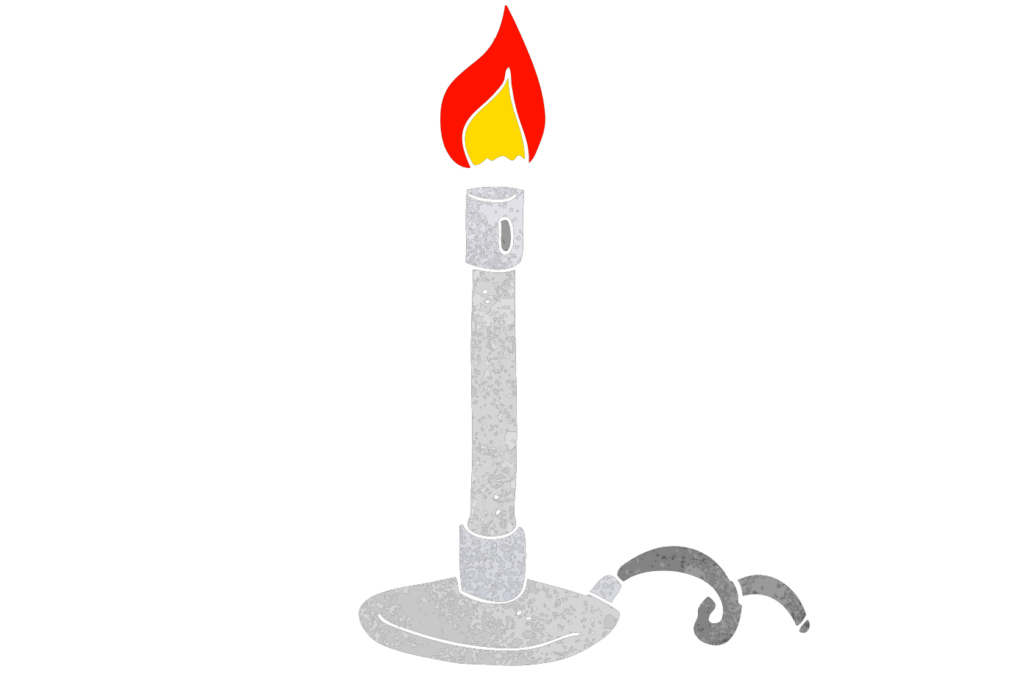Working Safely in a Lab
Working Safely in a Lab Revision
Working Safely in a Lab
There are many hazards in a laboratory. When you work in a laboratory you must be aware of these hazards and the risks they pose. There are many precautions you may take to keep yourself safe.
Hazard and Risk
A hazard is anything that may cause harm.
A risk is the likelihood that the hazard causes harm. All hazards have an associated risk.
For example, a Bunsen burner is a hazard because you may burn yourself on the flame. The risk of burning yourself on a Bunsen burner flame is low because you only switch it on during the experiment.
We can assess the size of a risk by looking at how many people in a given group exposed to the risk are harmed.
For example, if 10 \, 000 people are exposed to harmful radiation and only 20 develop radiation sickness, we can evaluate the risk of radiation sickness is low. However if 8 \, 000 of these people develop cancer later in life, the risk of cancer is high.
Decisions About Risk
In order to make decisions about risks, we need to evaluate two factors:
- The likelihood of the consequences
- The severity of the consequences
If a risk has very severe consequences but a low probability, you may decide not to expose yourself to that hazard. On the other hand, if a risk is very likely but has a small consequence, you may decide that the risk is acceptable.
Different people may perceive the same hazard to have a different level of risk. People tend to perceive familiar risks (such as crossing the road) as low risk but unfamiliar risks (such as travelling in an airplane) as high risk. Short-term consequences of a hazard (like burning your tongue on a hot drink) are also often perceived as higher risk compared to long-term consequences (like developing lung problems from smoking). People are also more likely to accept a high level of risk when they are choosing to do something (for example, using a tanning-bed) rather than a risk being enforced upon them (for example, a nuclear power station being built nearby somebody’s home).
Hazards and Safety Precautions in a Laboratory
There are hazards in biology, chemistry and physics laboratories.


Hazards in a biology laboratory may include:
- Sharp equipment such as a scalpel
- Harmful microorganisms
- Harmful chemicals
- Biological waste
Safety precautions to protect yourself from these risks include:
- Wearing protective clothing such as lab coats, gloves and goggles
- Avoid handling chemicals and biological substances with your hands
- Wash your hands after an experiment
- Tie your hair back


Hazards in a chemistry laboratory may include:
- Harmful chemicals and gasses
- Bunsen burners
- Broken glass equipment such as beakers
- Explosive and flammable materials
Safety precautions to protect yourself from these risks include:
- Wearing protective clothing such as lab coats, gloves and goggles
- Wash your hands after an experiment
- Tie your hair back
- Work in a well-ventilated room


Hazards in a physics laboratory may include:
- Heavy electrical equipment
- High voltage electrical equipment
- Radioactive materials
- High intensity lasers
Safety precautions to protect yourself from these risks include:
- Handle radioactive materials with tongs
- Minimise the time spent around radioactive materials
- Make sure electrical equipment is not broken
- Do not touch live electrical equipment
Working Safely in a Lab Example Questions
Question 1: State the definition of a hazard.
[1 mark]
Anything that may cause harm.
Question 2: State the definition of a risk.
[1 mark]
The likelihood of harm occurring from a hazard.
Question 3: How can you evaluate a risk?
[2 marks]
By assessing:
- The likelihood of the consequences
- The severity of the consequences






